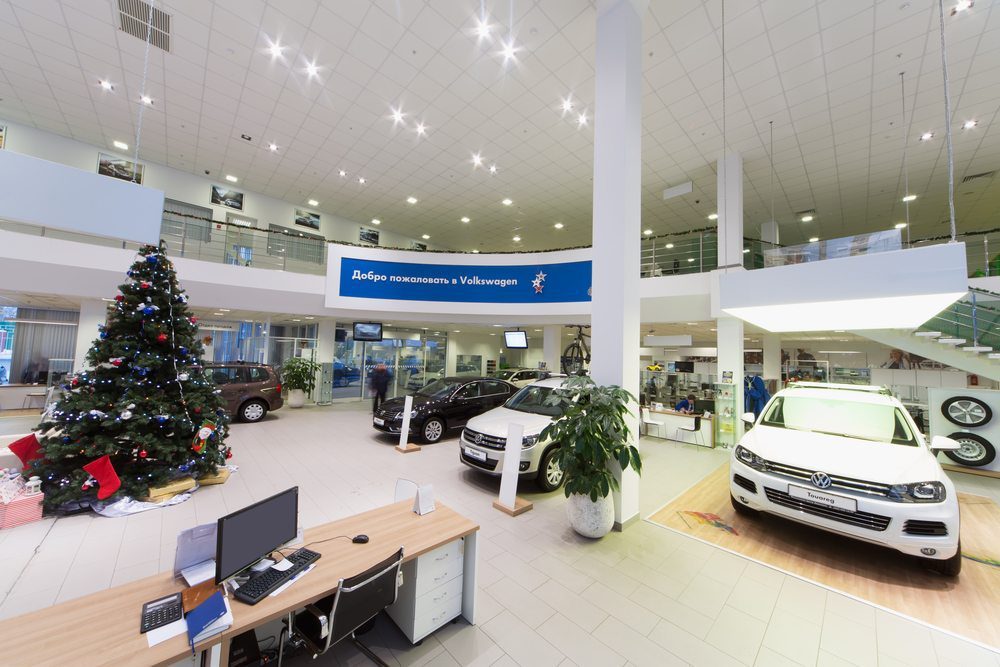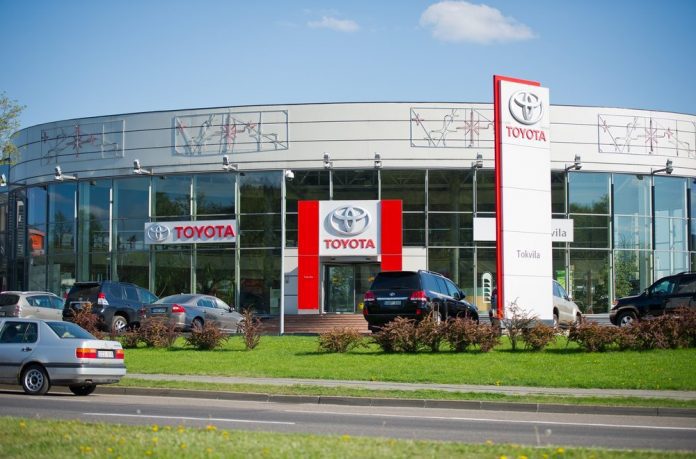Be prepared for extremely detailed project plans and numerous meetings with reviewers, architects and contractors. BY CHIP WALKER
Congratulations! You have made the decision (maybe with help) to upgrade your dealership buildings in your OEM’s new image package. Now what?
If your manufacturer offers a reimaging compensation package, you need to grab it. “Reimaging” refers to the design elements that the OEM and its design team have put together to help dealers visualize what the project should resemble at the end. Many of these elements are required to ensure a construction project is compliant at the end of your build.
Investing in your dealership site and buildings can be an adventure, to say the least. Before proceeding with a reimaging, it is helpful to have a better grasp of how they work and the parties and cost centers involved.
The reimaging process can be overwhelming, but with some help and some patience it can be very impactful for your dealership, your staff and your customers. A reimaging project has to respect the individual culture of your store and the dealer’s personality, as well as civic interests and other local influences. All of these can be incorporated into the building’s design and flow, however, while still maintaining compliance with the manufacturer’s requirements.
First, let’s delve into some key terms of a reimaging project in more detail.
Key Players And Elements
Reimaging package: More specifically, this could cover everything from floor tiles to lighting, paint colors, wall coverings and more. The package also addresses exterior image items that give each OEM its signature branded look. This almost always involves the main entry points to the store and exterior finishes.
Dealers find these reimaging packages to be very comprehensive and detailed, as they include names and contact information for manufacturer’s representatives, model numbers, pre-approved color pallets, options and alternates for most materials.
As-builts: These are plans/blueprints of your current facility as it is constructed today. This gives the reviewing company a place to start.
This is important if your project is a remodel, because as-builts will show locations of your building’s steel framework including column lines, utility connections, plumbing routes, fire suppression systems and electrical service connections.
Third-party reviewers: These are companies that the OEM has hired to help review, oversee the overall project and building plans, finishes and space requirements to ensure they meet all goals and benchmarks established by the OEM for its image program.
The OEM will provide your dealership with minimum standards you must meet. They usually are based on your plan scope, market size and past sales volume.
Architects and general contractors: These are the professionals who work directly for your dealership. They are your partners to navigate with the OEM reimaging program and represent your interests with the third-party reviewers.
 What To Expect
What To Expect
Now, let’s discuss some of the practical realities in dealing with the key players and elements I just discussed.
With the reimaging project itself: To start the process, if your dealership is undergoing a remodel, you will have to produce a set of as-builts plans. Your architect or general contractor should be able to help here.
If a new, ground-up building is being constructed, some basic floor plans and a site plan will jump-start your first DID (design intents documents) meeting. You will typically get support from the OEM’s facilities team or zone representative. These people can smoothen the path and be very helpful with feedback, materials and support. Typically, they already will have managed several similar projects and can anticipate the challenges that come up almost every time. They will walk you through the process and how to work with any third-party reviewing company.
With as-builts: It is expensive to move or relocate some of the systems detailed in as-built plans. During the design process, look for any opportunities to let one or more of these systems stay where they are, so that cash can be spent in other areas of the reimaging project.
Sometimes, relocating one or more of these systems is unavoidable. That is fine; the overall negative effects on the project can far exceed the cost of relocation.
With third-party reviewers: Working with these people begins with your DID meeting. You will pay a fee to the third party for this review and support. The results from this meeting will be a package for you that will show space-planning; rough building size; key element locations; branding materials including any required furniture, point-of purchase displays, signage and internal graphics; and much more.
Once you receive your materials back from your reviewer, your architect will take those guidelines and turn them into construction documents. You will also need to pay a fee to the architect for this service, and it usually is based on a per-square-foot price.
These are your real building plans that your general contractor will use to apply for a building permit and to invite subcontractors to bid on your work. During creation of construction documents, regular reviews of those plans should be performed with the third-party company to make sure required components, materials and other benchmarks are accounted for and in the correct locations (which includes interior and exterior finishes, colors and materials).
This is important, because these reviews ensure your finished plans are “compliant” such that your dealership qualifies for any OEM funding for the project.
With architects and general contractors: In selecting these professionals, dealers need to tackle the job early and take their time. This is the team that will take your project to the finish line.
Always make sure to check their references. Have they designed or built other auto dealerships? Do they understand what is required with reimaging programs? Do they have the experience to see the project through to completion? Just because they have designed or built a business strip center doesn’t mean they understand how a dealership should look and, more importantly, how it should work.
In Conclusion
Construction at a dealership can be extremely exciting, even if it is very disruptive while you conduct business at the same time. There will be good days and challenging days during your project. A comprehensive plan and timeline are key tools and will help to reduce frustration among both your staff and your customers.
Try to have fun with your project. Motivate your salespeople with opportunities to market the renovation process in their favor by having “Pardon our Dust” and “Construction Reduction” sales. Or, display a rendering of the finished building in your guest waiting area so your staff and customers can share your vision.



